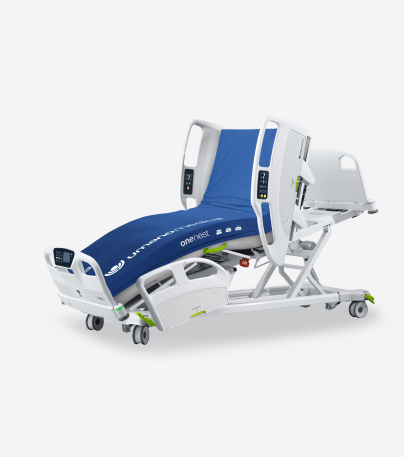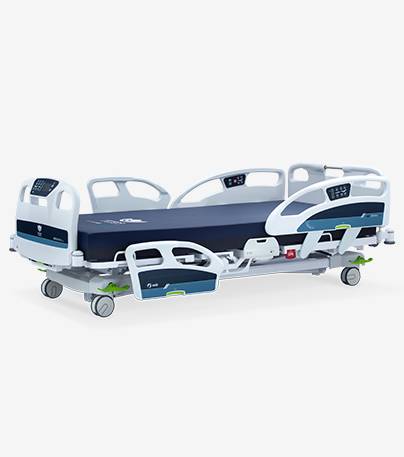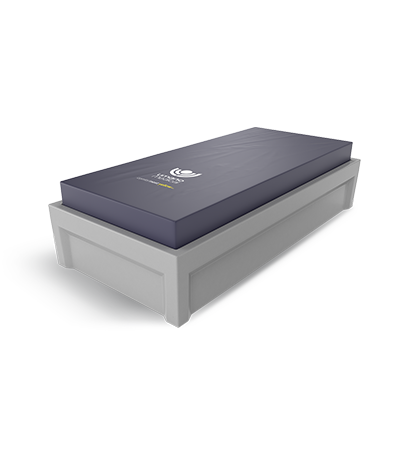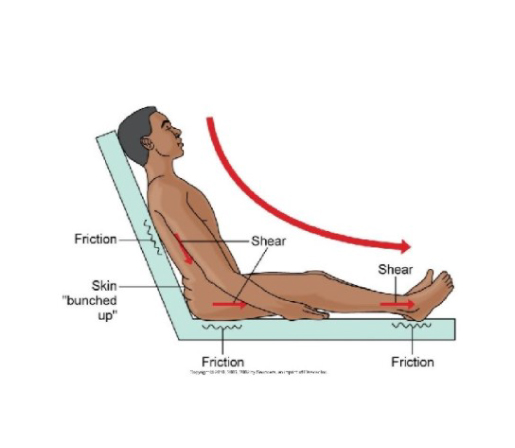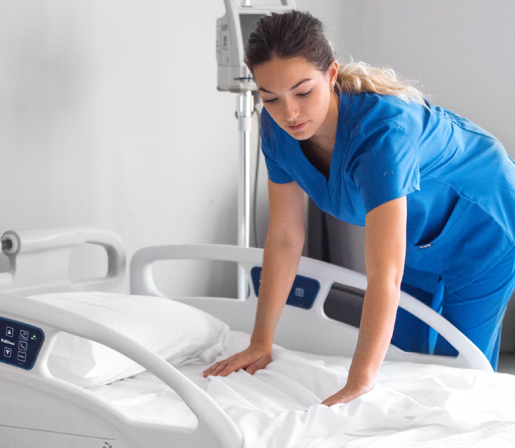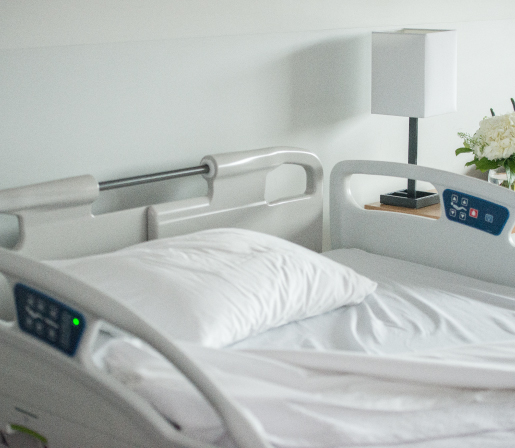
Understanding Therapeutic Support Surfaces

Addressing pressure injuries constitutes a major concern in healthcare settings. It is, as you are aware, a multifactorial matter that must be considered in all its complexity.
Given the swift technological evolution of support surfaces, it is unsurprising that choosing from the array of models available proves challenging for care teams.
To help you get a clearer view of your options, this article provides a portrait of the different technologies and concepts around which support surfaces are designed.
Let’s start off with a reminder of the common terms or physical concepts related to therapeutic support surfaces:
- Therapeutic support surfaces designate mattresses that offer one or many therapies to redistribute pressure, reduce shear and friction, and manage heat buildup and humidity. Therapeutic surfaces present these features to assist in the prevention and healing of pressure injuries.
- Pressure redistribution refers to the support surface’s ability to distribute weight across the contact areas of the patient body.
- Envelopment corresponds to the support surface’s ability to conform to irregularities—such as body contours, bony prominences, linens, and the patient’s clothing—without causing excessive pressure on the body.
- Immersion occurs when the patient’s body sinks into the surface and the pressure is redistributed over the entire contact area, not just the bony prominences or body contours.
- Microclimate management refers to the support surface’s ability to manage heat buildup and humidity, which can aid in the prevention of skin maceration by keeping skin cooler and drier.
- Foam density indicates how tightly the matter is compacted. A support surface’s density is a strong indicator of its quality and durability expectations. Generally, the higher the density is, the higher the quality and durability will be.
- IFD / ILD ratings stands for indentation force or load deflection and defines the support surface’s firmness level. It is an important indicator for patient comfort and overall pressure redistribution performance.
Categories of Therapeutic Support Surfaces
Therapeutic support surfaces can be split into two main categories.
- Reactive surfaces, also called ²reactive/continuous low-pressure² or ²static surfaces², usually refer to non-powered support surfaces. With these support surfaces, pressure redistribution occurs only when a load — such as the patient weight — rests upon them. Reactive surfaces are often chosen for patients that have limited mobility, have pressure injuries, or are at risk of developing them[1].
- Active surfaces, also called ²dynamic surfaces², refer to surfaces that rely upon an ongoing power supply. With active surfaces, pressure redistribution is adjusted mechanically, with the use of a control unit. Often used for patients that are less mobile or at a greater risk of developing pressure injuries, different active surfaces offer one or a variety of therapies that are chosen depending upon a patient’s specific needs and conditions.

The first figure represents the electrically controlled pressure redistribution in an active surface. The second illustrates pressure redistribution occurring from patient weight upon a reactive support surface.
Four Common Therapies Offered Through Active Support Surfaces
There are various existing active support surface therapies. The most common types are alternating pressure, static mode (also called ''flotation''), low air loss, and continuous lateral rotation. Support surfaces can offer one or multiple therapies.
Alternating Pressure
A support surface with alternating pressure therapy provides pressure redistribution via cyclic changes in loading and unloading. Air cells in the surface alternately fill and empty to keep bearing weight off bony prominences. This therapy promotes proper blood flow and circulation to the skin for immobilized patients who are unable to frequently shift their weight.

This figure represents how pressure redistribution results from alternatively inflating and deflating air cells in alternating pressure therapy.
Static or flotation
When static therapy is selected, the surface maintains all air cells at the same pressure. The air pressure is kept low to allow for immersion and pressure redistribution over the entire contact area. The pressure inside the support surface can also be adjusted to the desired comfort level.

This figure illustrates how all air cells are kept at a lower and equivalent inflation level during static/flotation therapy.
Low air loss
Low air loss surfaces are designed to help regulate the microclimate of the patient’s skin by providing a flow of air directly under the patient through a fluid-resistant yet vapor permeable cover, to assist in managing the heat and humidity of the skin and decrease the risk of maceration.
Low air loss surfaces are therefore often chosen for patients facing humidity and heat buildup issues.
This image represents how the air influx passes through a vapor permeable cover in low air loss therapy.

Continuous Lateral Rotation Therapy (CLRT)
Support surfaces that offer continuous lateral rotation therapy (CLRT) provide, as the name states, a sideways rotation. Rotation duration, frequency, and turn angle can be adjusted depending upon the specific needs of the patient.
CLRT support surfaces are commonly used for patients that are at risk of developing pulmonary complications due to immobility, such as ventilator-associated pneumonia. In this case, CLRT is most effective when the angle of turn is at a minimum of 40 degrees2. CLRT surfaces can also be used for pressure redistribution to address patients facing immobility issues.
It is important to keep in mind that although the surface does provide some repositioning through the rotation, CLRT does not replace the need for patient repositioning—as it remains necessary to ensure complete off-loading of all body parts.
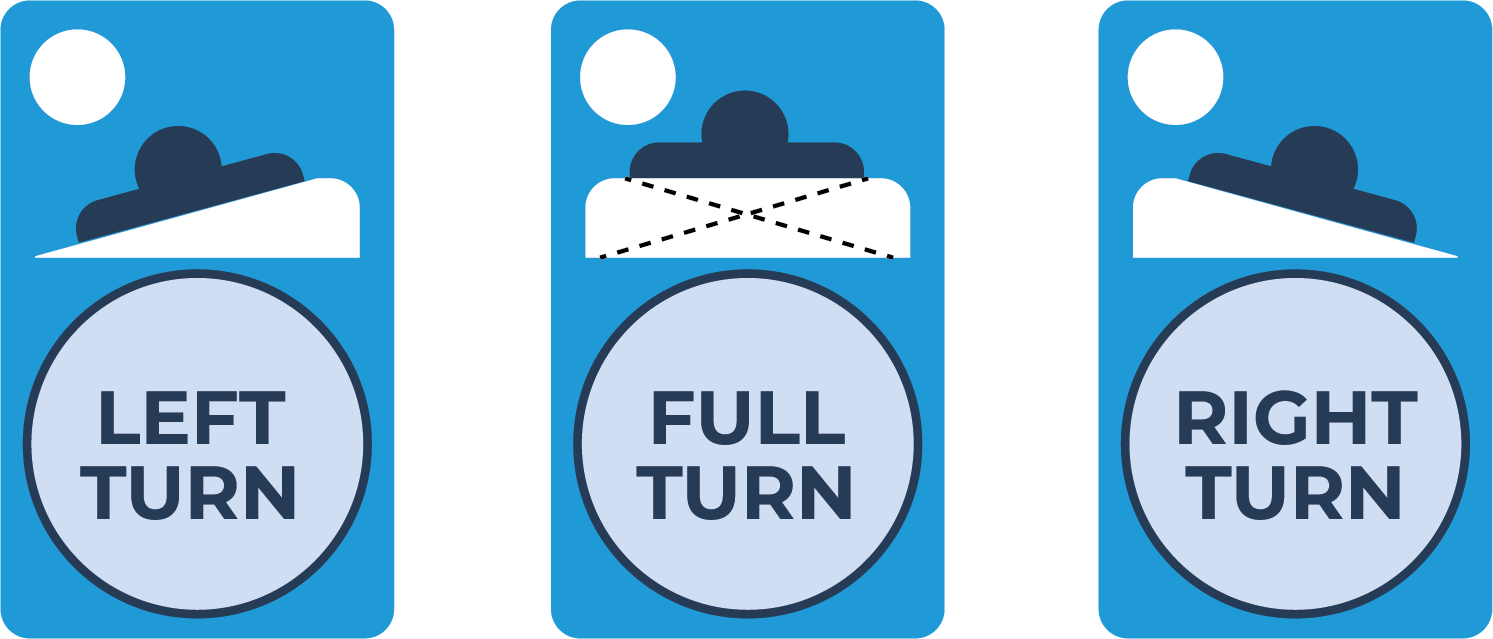
This figure shows the lateral rotation that occurs in a surface that offers CLRT.
The Right Therapy is the Therapy that Addresses Your Needs
From active to reactive surfaces, alternating pressure therapy to CLRT, these technologies have shown their capabilities of assisting with the prevention and treatment of pressure injuries and other complications associated with immobility. While understanding the different models available is essential to making an informed decision, the right support surface remains the one that addresses the specific needs of your patients, healthcare staff, and institution.
Identifying these particular needs will always be the first step in choosing the right support surface. Our support surfaces specialists are here to help you identify those needs and guide you through our support surface portfolio. Please don’t hesitate to reach out with any questions you may have.
About the author

Jasmine Joly-Dumont
Related articles

Headquarters
230 Nilus-Leclerc Blvd.
L'Islet, QC G0R 2C0
CANADA
1 844 409-4030
Lévis Office
470 3e Avenue
Lévis, QC G6W 5M6
CANADA
US Location
11845 Adie Rd.
Maryland Heights, MO 63043
UNITED STATES
Sherbrooke Office
670, Joseph-Louis-Mathieu Rd.
Sherbrooke, J1R 0X3
CANADA
Australia Office
Unit 4, 8 Abdon Close
Bennetts Green, NSW 2290
AUSTRALIA
Careers
Our talented and passionate team is determined to revolutionize the medical industry. Be part of the journey: join the Umano Experience.
See available jobsConnect with us
Copyright © 2025 Umano Medical inc

